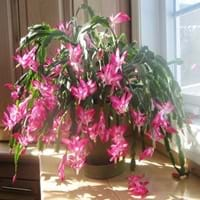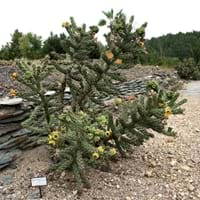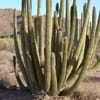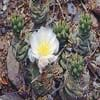Life Span
Perennial
Perennial
Type
Cactus or Succulent
Cactus or Succulent
Origin
North America, Latin America and the Caribbean, Central America, South America
Western United States, Mexico
Types
Not Available
Not Available
Habitat
Coastal Mountains, Humid climates
Desert
USDA Hardiness Zone
Not Available
4-11
Sunset Zone
Not Available
8, 9, 10, 11, 12, 13
Habit
Clump-Forming
Oval or Rounded
Flower Color
Purple
Magenta, Rose, Burgundy, Bronze
Flower Color Modifier
Not Available
Not Available
Fruit Color
Pink
Not Available
Leaf Color in Spring
Green, Dark Green
Not Available
Leaf Color in Summer
Green, Dark Green
Several shades of Green
Leaf Color in Fall
Green, Dark Green
Light Green
Leaf Color in Winter
Green, Dark Green
Several shades of Green
Leaf Shape
Toothed
Linear
Plant Season
Spring, Summer, Fall, Winter
Summer
Sunlight
Partial Sun, Partial shade
Full Sun, Partial Sun
Type of Soil
Loam, Sand
Loam, Sand
The pH of Soil
Acidic, Neutral
Neutral
Soil Drainage
Well drained
Well drained
Bloom Time
Not Available
Spring, Late Spring, Early Summer
Tolerances
Not Available
Drought
Where to Plant?
Container, Ground, Pot
Ground, Pot
How to Plant?
Stem Planting, Transplanting
Grafting, Seedlings, Transplanting
Plant Maintenance
Medium
Medium
Watering Requirements
Average Water Needs, Do Not over Water, Never Over-water
Does not require lot of watering, Water once every two or three weeks, Water when soil is dry
In Summer
Lots of watering
Lots of watering
In Spring
Moderate
Moderate
In Winter
Average Water
Average Water
Soil pH
Acidic, Neutral
Neutral
Soil Type
Loam, Sand
Loam, Sand
Soil Drainage Capacity
Well drained
Well drained
Sun Exposure
Partial Sun, Partial shade
Full Sun, Partial Sun
Pruning
Prune if you want to improve plant shape, Requires little pruning
Remove damaged leaves, Remove dead branches, Remove dead leaves
Fertilizers
All-Purpose Liquid Fertilizer
All-Purpose Liquid Fertilizer
Pests and Diseases
Red blotch
Red blotch
Plant Tolerance
Drought
Drought
Flower Petal Number
Not Available
Single
Fragrant Leaf
No
Not Available
Foliage Texture
Bold
Bold
Foliage Sheen
Glossy
Not Available
Attracts
Not Available
Birds
Allergy
Eye irritation, sneezing
Digestive Problems
Aesthetic Uses
Beautification, Landscape Designing, Showy Purposes
Showy Purposes
Beauty Benefits
Not Available
Not Available
Environmental Uses
Air purification
Air purification
Medicinal Uses
Not Available
Diabetes, Hangover
Part of Plant Used
Leaves
Flowers, Leaves
Other Uses
Decoration Purposes, Showy Purposes, Used as Christmas Tree, Used as Ornamental plant
Jam, Not Available
Used As Indoor Plant
Yes
Yes
Used As Outdoor Plant
Yes
Yes
Garden Design
Container, Houseplant, Rock Garden, Wall
Container, Feature Plant, Foundation, Houseplant, Mixed Border
Botanical Name
SCHLUMBERGERA x buckleyi
CYLINDROPUNTIA imbricata
Common Name
Thanksgiving Cactus, Crab Cactus
Cane Cholla, Walking Stick Cholla, Tree Cholla, Chainlink Cactus
In Hindi
क्रिसमस कैक्टस
Cardenche
In German
Weihnachtskaktus
Cardenche
In French
Cactus de Noël
Cactus rustique
In Spanish
Cactus de Navidad
Cardenche
In Greek
Χριστούγεννα Cactus
Cardenche
In Portuguese
Cacto de Natal
Cardenche
In Polish
Christmas Cactus
Cardenche
In Latin
Nativitatis Cactus
Cardenche
Phylum
Magnoliophyta
Tracheophyta
Class
Magnoliopsida
Dicotyledonae
Order
Caryophyllales
Caryophyllales
Family
Cactaceae
Cactaceae
Genus
Schlumbergera
Not Available
Clade
Angiosperms, Core eudicots, Eudicots
Angiosperms, Eudicots
Tribe
Not Available
Not Available
Subfamily
Cactoideae
Cactoideae, Maihueniodeae, Opuntioideae, Pereskioideae
Number of Species
Not Available
Not Available
Properties of Christmas Cactus and Cardenche
Wondering what are the properties of Christmas Cactus and Cardenche? We provide you with everything About Christmas Cactus and Cardenche. Christmas Cactus doesn't have thorns and Cardenche doesn't have thorns. Also Christmas Cactus does not have fragrant flowers. Christmas Cactus has allergic reactions like Eye irritation and sneezing and Cardenche has allergic reactions like Eye irritation and sneezing. Compare all the properties and characteristics of these two plants. Find out which of these plant can be used as indoor plant. If you are interested to decorate your house and garden, find out aesthetic uses, compare them and select the plant which will beautify your surrounding. Along with beautification, try comparing medicinal and edible uses of Christmas Cactus and Cardenche and you can choose the plant having best and most benefits.
Season and Care of Christmas Cactus and Cardenche
Season and care of Christmas Cactus and Cardenche is important to know. While considering everything about Christmas Cactus and Cardenche Care, growing season is an essential factor. Christmas Cactus season is Spring, Summer, Fall and Winter and Cardenche season is Spring, Summer, Fall and Winter. The type of soil for Christmas Cactus is Loam, Sand and for Cardenche is Loam, Sand while the PH of soil for Christmas Cactus is Acidic, Neutral and for Cardenche is Neutral.
Christmas Cactus and Cardenche Physical Information
Christmas Cactus and Cardenche physical information is very important for comparison. Christmas Cactus height is 45.70 cm and width 71.10 cm whereas Cardenche height is 90.00 cm and width 60.00 cm. The color specification of Christmas Cactus and Cardenche are as follows:
Christmas Cactus flower color: Purple
Christmas Cactus leaf color: Green and Dark Green
Cardenche flower color: Magenta, Rose, Burgundy and Bronze
- Cardenche leaf color: Not Available
Care of Christmas Cactus and Cardenche
Care of Christmas Cactus and Cardenche include pruning, fertilizers, watering etc. Christmas Cactus pruning is done Prune if you want to improve plant shape and Requires little pruning and Cardenche pruning is done Remove damaged leaves, Remove dead branches and Remove dead leaves. In summer Christmas Cactus needs Lots of watering and in winter, it needs Average Water. Whereas, in summer Cardenche needs Lots of watering and in winter, it needs Average Water.





